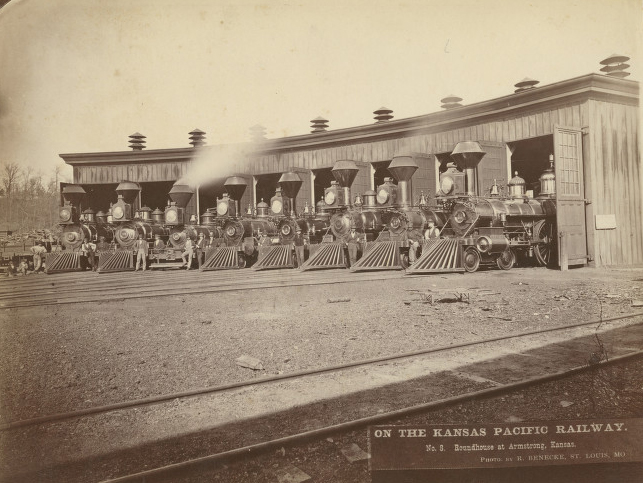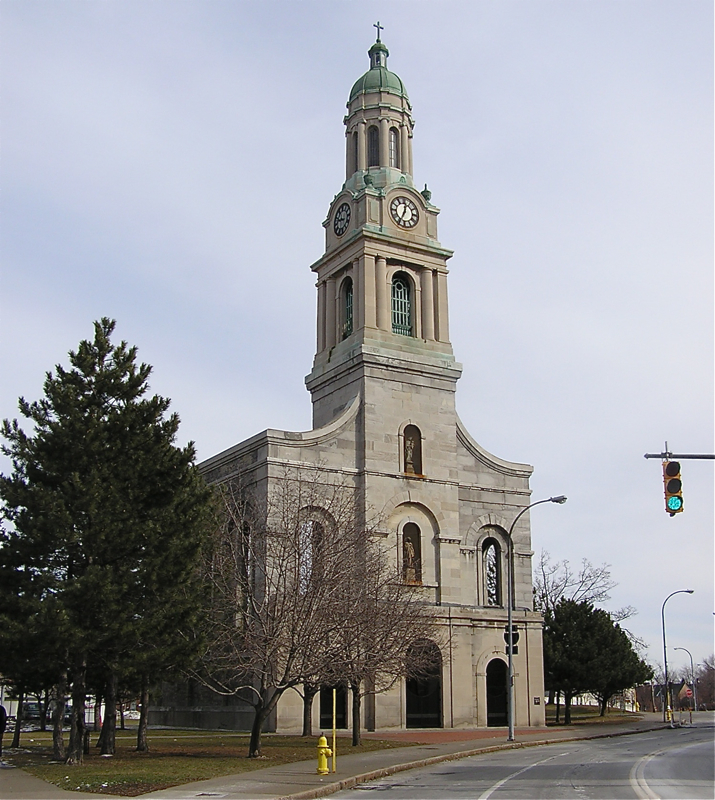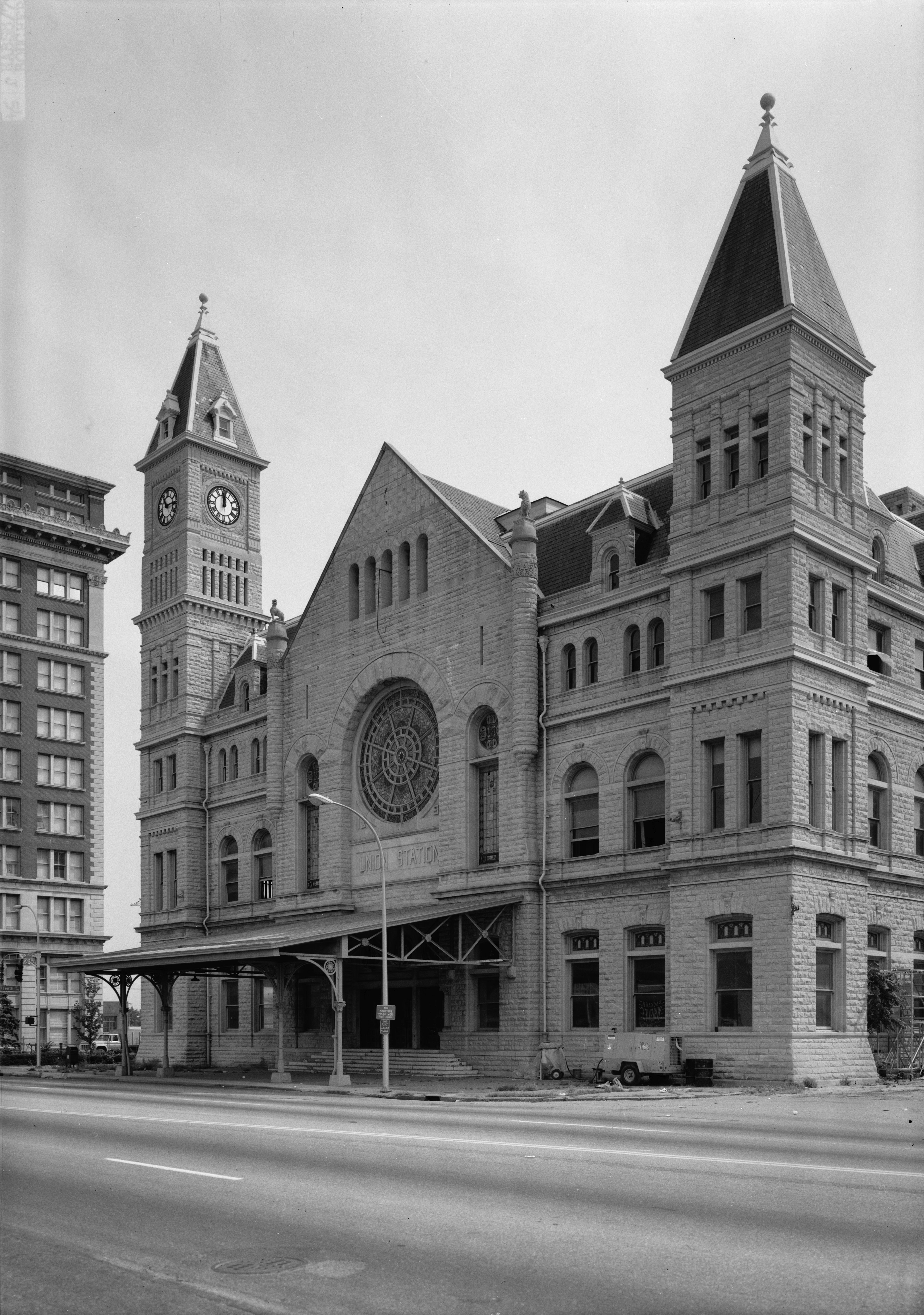|
John Byers Anderson
John Byers Anderson (November 22, 1817 – July 7, 1897) (alternatively John Byars Anderson) was an educator, railroad contractor and United States Army officer who served in the American Civil War as a colonel and superintendent of the Union railroads in the Department of the Ohio, Department of the Tennessee and Department of the Cumberland. Education work Anderson was born in Washington County, Pennsylvania, on November 22, 1817. He graduated from Washington and Jefferson College in 1836. After graduation, Anderson moved to Kentucky to teach. In 1842 he and his wife opened two separate private schools for boys and girls in New Albany, Indiana, known as the Anderson Collegiate Institute and Anderson's Female Seminary. He operated the schools until 1858. Charles Woodruff Shields and Narcissa Chisholm Owen were graduates of the Institute, and the missionary William Alexander Parsons Martin served as professor of classics for one year at the school. Railroad work In the 1850s ... [...More Info...] [...Related Items...] OR: [Wikipedia] [Google] [Baidu] |
Washington County, Pennsylvania
Washington County is a county in the Commonwealth of Pennsylvania. As of the 2020 census, the population was 209,349. Its county seat is Washington. Washington County is part of the Pittsburgh, PA Metropolitan Statistical Area. The county is home to Washington County Airport, three miles (5 km) southwest of Washington. History The county was created on March 28, 1781, from part of Westmoreland County. The city and county were both named after American Revolutionary War leader George Washington, who eventually became the first President of the United States. The town of Charleroi got its name from the Belgian city of Charleroi. There lived many Belgian immigrants in the Monongahela area at the end of the 19th century, some of whom were glass makers. Geography According to the U.S. Census Bureau, the county has a total area of , of which is land and (0.5%) is water. Surrounding counties * Beaver County (north) *Allegheny County (NNE-northeast) * Westmoreland C ... [...More Info...] [...Related Items...] OR: [Wikipedia] [Google] [Baidu] |
Corydon, Indiana
Corydon is a town in Harrison Township, Harrison County, Indiana. Located north of the Ohio River in the extreme southern part of the U.S. state of Indiana, it is the seat of government for Harrison County. Corydon was founded in 1808 and served as the capital of the Indiana Territory from 1813 to 1816. It was the site of Indiana's first constitutional convention, which was held June 10–29, 1816. Forty-three convened to consider statehood for Indiana and drafted its first state constitution. Under Article XI, Section 11, of the Indiana 1816 constitution, Corydon was designated as the capital of the state until 1825, when the seat of state government was moved to Indianapolis. During the American Civil War, Corydon was the site of the Battle of Corydon, the only official pitched battle waged in Indiana during the war. More recently, the town's numerous historic sites have helped it become a tourist destination. A portion of its downtown area is listed in the National Registe ... [...More Info...] [...Related Items...] OR: [Wikipedia] [Google] [Baidu] |
Junction City, Kansas
Junction City is a city in and the county seat of Geary County, Kansas, United States. As of the 2020 census, the population of the city was 22,932. Fort Riley, a major U.S. Army post, is nearby. History Junction City is so named from its position at the confluence of the Smoky Hill and Republican rivers, which forms the Kansas River. In 1854, Andrew J. Mead of New York of the Cincinnati-Manhattan Company, Free Staters connected to the Massachusetts Emigrant Aid Company planned a community there called Manhattan (there was also a discussion to call it New Cincinnati). When the steamship ''Hartford'' delivering the immigrants could not reach the community because of low water on the Kansas River, the Free Staters settled 20 miles east in what today is Manhattan, Kansas. The community was renamed Millard City for Captain Millard of the Hartford on October 3, 1855. It was renamed briefly Humboldt in 1857 by local farmers and renamed again later that year to Junction City ... [...More Info...] [...Related Items...] OR: [Wikipedia] [Google] [Baidu] |
Kansas
Kansas () is a state in the Midwestern United States. Its capital is Topeka, and its largest city is Wichita. Kansas is a landlocked state bordered by Nebraska to the north; Missouri to the east; Oklahoma to the south; and Colorado to the west. Kansas is named after the Kansas River, which in turn was named after the Kansa Native Americans who lived along its banks. The tribe's name (natively ') is often said to mean "people of the (south) wind" although this was probably not the term's original meaning. For thousands of years, what is now Kansas was home to numerous and diverse Native American tribes. Tribes in the eastern part of the state generally lived in villages along the river valleys. Tribes in the western part of the state were semi-nomadic and hunted large herds of bison. The first Euro-American settlement in Kansas occurred in 1827 at Fort Leavenworth. The pace of settlement accelerated in the 1850s, in the midst of political wars over the slavery deba ... [...More Info...] [...Related Items...] OR: [Wikipedia] [Google] [Baidu] |
Union Pacific Railway, Eastern Division
The Kansas Pacific Railway (KP) was a historic railroad company that operated in the western United States in the late 19th century. It was a federally chartered railroad, backed with government land grants. At a time when the first transcontinental railroad was being constructed by the Central Pacific and the Union Pacific, it tried and failed to join the transcontinental ranks. It was originally the "Union Pacific, Eastern Division", although it was completely independent. The Pennsylvania Railroad, working with Missouri financiers, designed it as a feeder line to the transcontinental system. The owners lobbied heavily in Washington for money to build a railroad from Kansas City to Colorado, and then to California. It failed to get funding to go west of Colorado. It operated many of the first long-distance lines in the state of Kansas in the 1870s, extending the national railway network westward across that state and into Colorado. Its main line furnished a principal transpor ... [...More Info...] [...Related Items...] OR: [Wikipedia] [Google] [Baidu] |
William Rosecrans
William Starke Rosecrans (September 6, 1819March 11, 1898) was an American inventor, coal-oil company executive, diplomat, politician, and U.S. Army officer. He gained fame for his role as a Union general during the American Civil War. He was the victor at prominent Western Theater battles, but his military career was effectively ended following his disastrous defeat at the Battle of Chickamauga in 1863. Rosecrans graduated in 1842 from the United States Military Academy where he served in engineering assignments as well as a professor before leaving the Army to pursue a career in civil engineering. At the start of the Civil War, leading troops from Ohio, he achieved early combat success in western Virginia. In 1862 in the Western Theater, he won the battles of Iuka and Corinth while under the command of Maj. Gen. Ulysses S. Grant. His brusque, outspoken manner and willingness to quarrel openly with superiors caused a professional rivalry with Grant (as well as with Secre ... [...More Info...] [...Related Items...] OR: [Wikipedia] [Google] [Baidu] |
United States Military Railroad
The U.S. Military Railroad (USMRR) was established by the United States War Department as a separate agency to operate any rail lines seized by the government during the American Civil War. An Act of Congress of 31 January 1862 authorized President Abraham Lincoln to seize control of the railroads and telegraph for military use in January 1862.Gable, ''Railroad Generalship'', p. 13. In practice, however, the USMRR restricted its authority to Southern rail lines captured in the course of the war. As a separate organization for rail transportation the USMRR is one of the predecessors of the modern United States Army Transportation Corps. History The American Civil War was the first war where railroads were a significant factor in moving troops and supplying forces in the field. The United States Military Railroad organization was established to coordinate this new capability for the Union Army. The USMRR organization benefited from the appointment of experienced railroad men ... [...More Info...] [...Related Items...] OR: [Wikipedia] [Google] [Baidu] |
Daniel McCallum
Daniel Craig McCallum (January 21, 1815 – December 27, 1878) was a Scottish-born American railroad engineer, general manager of the New York and Erie Railroad and Union Brevet Major General of the United States Military Railroads during the American Civil War, known as one of the early pioneers of management. He set down a group of general principles of management, and is credited for having developed the first modern organizational chart. Alfred D. Chandler, Jr. (1977) '' The Visible Hand: The Managerial Revolution in American Business''. p. 101 Early life and education McCallum was born in Johnstone in the council area of Renfrewshire in the west-central Lowlands of Scotland in 1815. In 1822, while he was still a boy, his family emigrated to Rochester, New York. He did attend elementary school but did not want to follow his father's footsteps and become a tailor. Instead, McCallum left school to become a carpenter and worked his way up. New York engineer In the ... [...More Info...] [...Related Items...] OR: [Wikipedia] [Google] [Baidu] |
William Tecumseh Sherman
William Tecumseh Sherman ( ; February 8, 1820February 14, 1891) was an American soldier, businessman, educator, and author. He served as a general in the Union Army during the American Civil War (1861–1865), achieving recognition for his command of military strategy as well as criticism for the harshness of the scorched-earth policies that he implemented against the Confederate States. British military theorist and historian B. H. Liddell Hart declared that Sherman was "the first modern general". Born in Ohio into a politically prominent family, Sherman graduated in 1840 from the United States Military Academy at West Point. He interrupted his military career in 1853 to pursue private business ventures, without much success. In 1859, he became superintendent of the Louisiana State Seminary of Learning & Military Academy (now Louisiana State University), a position from which he resigned when Louisiana seceded from the Union. Sherman commanded a brigade of volunteers ... [...More Info...] [...Related Items...] OR: [Wikipedia] [Google] [Baidu] |
Louisville And Nashville Railroad
The Louisville and Nashville Railroad , commonly called the L&N, was a Class I railroad that operated freight and passenger services in the southeast United States. Chartered by the Commonwealth of Kentucky in 1850, the road grew into one of the great success stories of American business. Operating under one name continuously for 132 years, it survived civil war and economic depression and several waves of social and technological change. Under Milton H. Smith, president of the company for 30 years, the L&N grew from a road with less than of track to a system serving fourteen states. As one of the premier Southern railroads, the L&N extended its reach far beyond its namesake cities, stretching to St. Louis, Memphis, Atlanta, and New Orleans. The railroad was economically strong throughout its lifetime, operating freight and passenger trains in a manner that earned it the nickname, "The Old Reliable." Growth of the railroad continued until its purchase and the tumultuous ... [...More Info...] [...Related Items...] OR: [Wikipedia] [Google] [Baidu] |
Pittsburgh, Fort Wayne And Chicago Railway
The Pittsburgh, Fort Wayne and Chicago Railway was a major part of the Pennsylvania Railroad system, extending the PRR west from Pittsburgh, Pennsylvania, via Fort Wayne, Indiana, to Chicago, Illinois. It included the current Norfolk Southern-owned Fort Wayne Line east of Crestline, Ohio, to Pittsburgh, and the Fort Wayne Secondary, owned by CSX, from Crestline west to Tolleston in Gary, Indiana. CSX leased its entire portion in 2004 to the Chicago, Fort Wayne and Eastern Railroad (CFE). The remaining portion of the line from Tolleston into Chicago is now part of the Norfolk Southern's Chicago District, with a small portion of the original PFW&C trackage abandoned in favor of the parallel lines of former competitors which are now part of the modern NS system. History The Ohio and Pennsylvania Railroad was chartered in Ohio on February 24 and in Pennsylvania on April 11, 1848, to build from Allegheny City (annexed by Pittsburgh in 1907) west to Crestline, Ohio, on the Clevela ... [...More Info...] [...Related Items...] OR: [Wikipedia] [Google] [Baidu] |
Pennsylvania Railroad
The Pennsylvania Railroad (reporting mark PRR), legal name The Pennsylvania Railroad Company also known as the "Pennsy", was an American Class I railroad that was established in 1846 and headquartered in Philadelphia, Pennsylvania. It was named for the commonwealth in which it was established. By 1882, Pennsylvania Railroad had become the largest railroad (by traffic and revenue), the largest transportation enterprise, and the largest corporation in the world. Its budget was second only to the U.S. government. Over the years, it acquired, merged with, or owned part of at least 800 other rail lines and companies. At the end of 1926, it operated of rail line;This mileage includes companies independently operated. PRR miles of all tracks, which includes first (or main), second, third, fourth, and sidings, totalled 28,040.49 at the end of 1926. in the 1920s, it carried nearly three times the traffic as other railroads of comparable length, such as the Union Pacific and Atchison, T ... [...More Info...] [...Related Items...] OR: [Wikipedia] [Google] [Baidu] |









